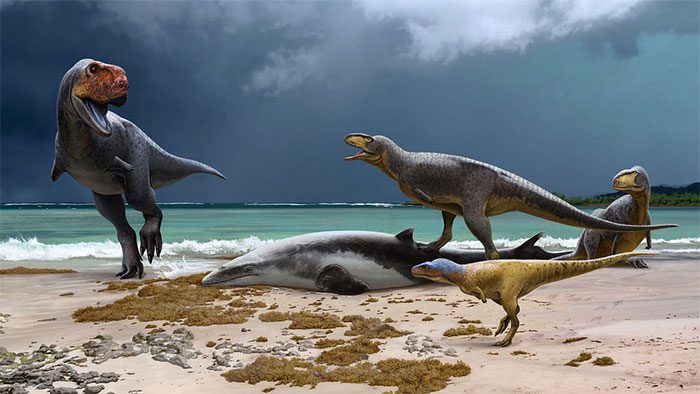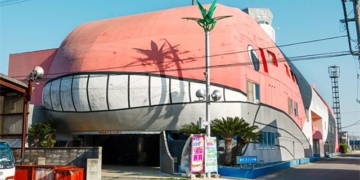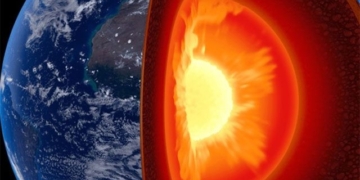Two “brother” species of the Tyrannosaurus rex have emerged from an unexpected location, entangled among the remains of sea monsters such as ichthyosaurs, mosasaurs, and sharks…
The colossal fossils of these two creatures were recently unearthed in the Ouled Abdoun Basin, located in northern Morocco. They lived approximately 66 million years ago and are described as having short snouts similar to bulldogs and extremely short “arms”, resembling mere stubs.
Although these two specimens belong to different species, they are both part of the Abelisauridae family, a group of carnivorous dinosaurs from the Southern Hemisphere, with physical characteristics and lineage closely related to the Northern Hemisphere’s Tyrannosaurus rex, according to Sci-News.

Two species of Tyrannosaurus at an ancient coastline – (Graphic: Andrey Atuchin).
One specimen left only a footprint, while the other left behind a leg bone, but the extensive dataset regarding the Tyrannosaurus rex and other traces in the vicinity have allowed scientists to reconstruct their bodies as they were when alive.
One of the creatures measured 2.5 meters in length, while the other reached up to 5 meters, larger than most T-rex specimens.
The two fossil parts were discovered from two neighboring towns: Sidi Daoui and Sidi Chennane.
However, the most puzzling aspect is that these towns were once part of a shallow tropical sea during the Cretaceous period, with remains of mosasaurs, ichthyosaurs, and sharks previously found. Scientists did not expect to discover dinosaurs in this area.
Prior evidence suggested the existence of another “brother” species of Tyrannosaurus nearby, indicating that within a small area, there were as many as three “monster kings” competing for dominance.
“They tell us that just before the Cretaceous–Paleogene extinction event, biodiversity was not declining but, in fact, was very diverse” – Professor Nour-Eddine Jalil, a paleontologist from the Natural History Museum and Cadi Ayyad University (Morocco), the lead author, stated.
The crisis referred to by Professor Jalil is the impact of the Chicxulub asteroid 66 million years ago, which wiped out all dinosaurs, ichthyosaurs, mosasaurs, and pterosaurs…, ending the “Age of Monsters” and contributing to the rise of mammals in the subsequent Paleogene period.
The official study of these two creatures has just been published in the scientific journal Cretaceous Research.




















































